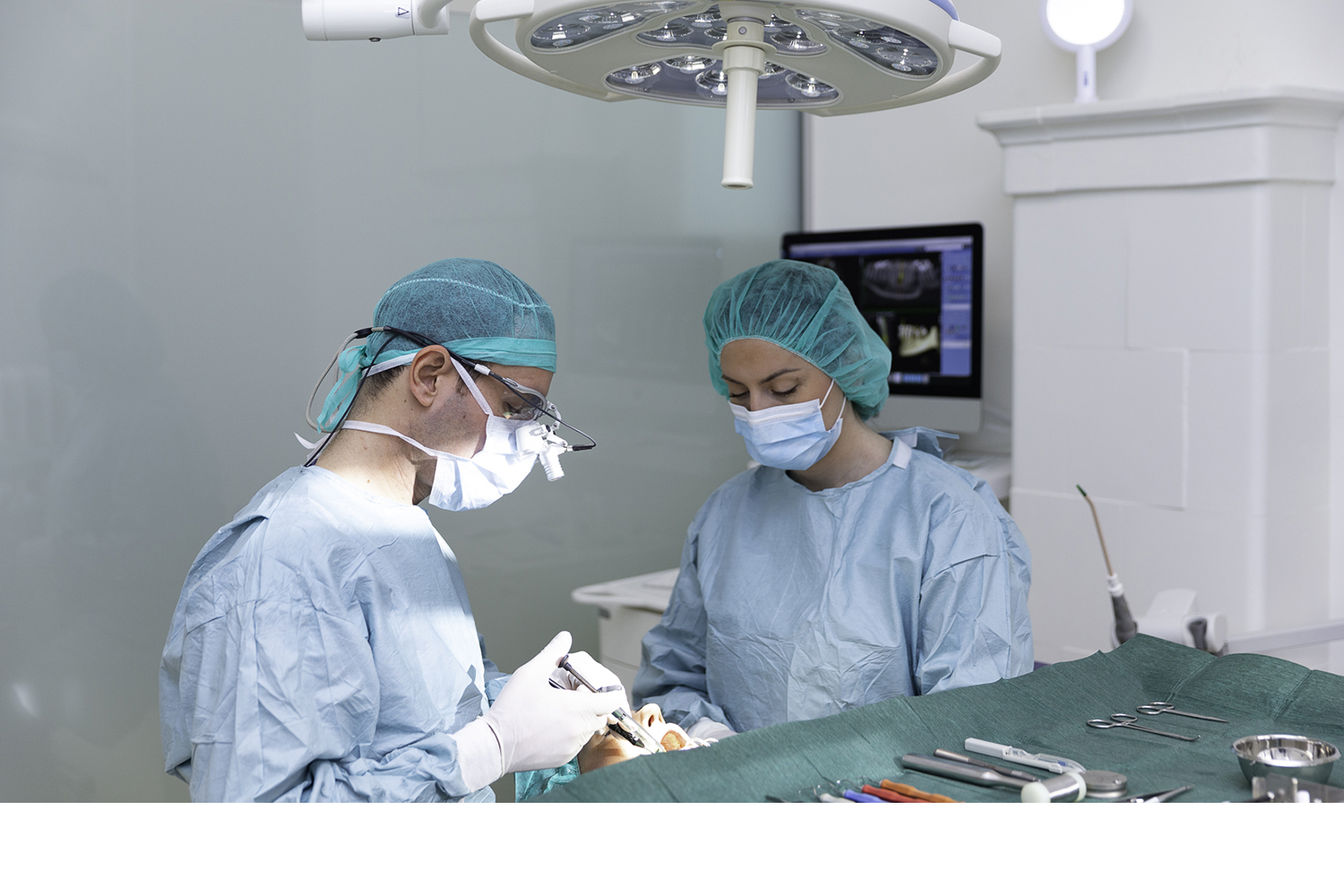Aesthetic implant
Implant treatment in the aesthetic zone
What is an implant in the aesthetic sector?
This is a dental implant that needs to be placed in a visible area when smiling. The incisors, canines, and premolars of both dental arches are considered part of the aesthetic zone. Therefore, it is crucial to pay special attention to aesthetics when placing these implants.
Requirements of the aesthetic sector
The dental implant plays not only a functional role but also an essential aesthetic role.
Indeed, the success of an implant in the aesthetic sector depends as much on the appearance of the prosthesis (color, translucency, and shape of the crown) as on the appearance and shape of the surrounding gum.
Moreover, we make no compromises in this area and use the most sophisticated techniques.
Therefore, every step of the implant treatment is of great importance to ensure that the final result looks natural.
Issues related to the aesthetic sector
When a tooth is extracted, we invariably observe a reduction in bone volume within the following three months. Additionally, this post-extraction bone loss is accompanied by a collapse of the gum tissue, which is no longer supported. Consequently, these bone and gum retractions have detrimental effects on the aesthetics of implant rehabilitations. Therefore, to counteract these processes and maintain adequate gum and bone levels, we must use specific techniques.
Moreover, when we remove a tooth located in the aesthetic zone, it is preferable to immediately place a fixed temporary tooth on the implant, allowing the patient to continue to lead a normal life. For this, we use an immediate loading technique (immediate aesthetic loading) to maintain aesthetics and comfort.
Implantation procedure in the aesthetic sector
The most suitable protocol for managing implants in the aesthetic sector is as follows: extraction / socket preservation / implantation / buried connective tissue graft / immediate aesthetic restoration.
In the same procedure:
- Extraction of the tooth in an atraumatic manner.
- Placement of the dental implant in an ideal three-dimensional position.
- Filling the socket with a biomaterial to limit bone resorption.
- Buried connective tissue graft, which involves adding the internal part of the gum under the gum at the level of the implant. This piece of gum is often taken from the upper wisdom teeth and is delicately slipped between the gum and the bone using a tunneling technique. This graft aims to compensate for the slight loss of bone volume and to maintain the gum and papillae in their original position.
- Immediate placement of an abutment and a temporary crown. You come to the office with a tooth to be extracted, and you leave with a fixed tooth on an implant.
After 3 months of healing, the abutment and temporary crown are replaced with a permanent ceramic abutment and crown.























